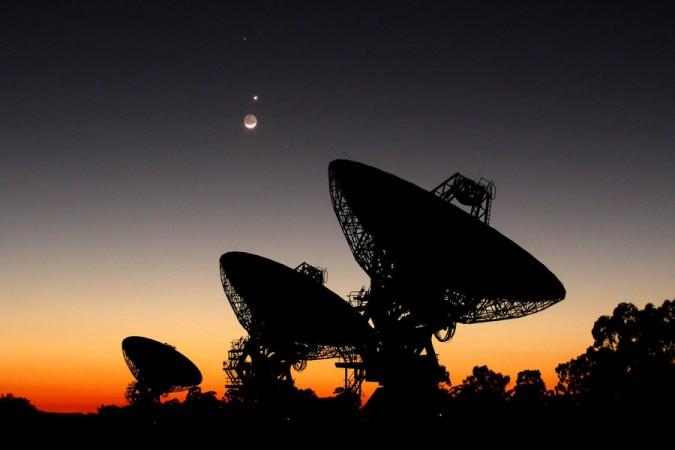
A rare celestial event, dubbed the "planet parade" will be visible in the night sky starting 7 Marchand will end with another rare event, a Blue Moon on 31 March. The cielestial show is visible to the naked eye and will not require any specialized telescopes and viewing instruments.
The planets that will be visible are Mercury, Venus, Mars, Jupiter, Saturn, and dwarf planet Pluto will also line up. This event, however, is best viewed from the northern hemisphere, reports say.
The best time to view this planet parade is just before day break. The moon will cross Saturn, Mars, and Jupiter just before sunrise. Look toward the south/ south east to see the celestial bodies on Thursday, Friday, and Saturday. Antares -- the brightest star in the night sky -- will also line up alongside.
Whoa! Cool. In March 2018, you can see all 5 bright planets. https://t.co/kwFqw9Gzhk Look west after sunset for Mercury and Venus. Mars, Jupiter and Saturn are up before dawn. #Mercury #Venus #Jupiter #Mars #Saturn #visibleplanets pic.twitter.com/oyss7rrvb2
— EarthSky (@earthskyscience) March 2, 2018
The rest of the parade, namely Venus and Mercury, will be visible just after sunset in the evening. Those looking for Mercury can see it best on 15 March. Just as the sun sets, look toward the west. Earth Sky reports that the planets will be visible all through March. Of the two, Venus will be the first to catch the eye as it will appear 12 times brighter, and the one right next to it is Mercury. If Mercury is not readily visible, a simple pair of binoculars will help spot it, says the report.
As long as there is not too much cloud cover, seeing this line-up should not be too difficult, notes the report
The last day of March will also have a rare Blue Moon: the second full moon within a calendar month.
March is packed with a lot of interesting sighting opportunities for stargazers -- two major asteroids have passed us last week, and the Worm Moon last week.
The exact locations of each planet can be tracked online using the Earth Sky tracker.

















